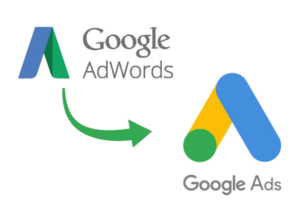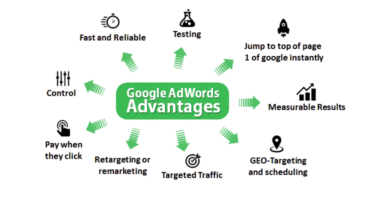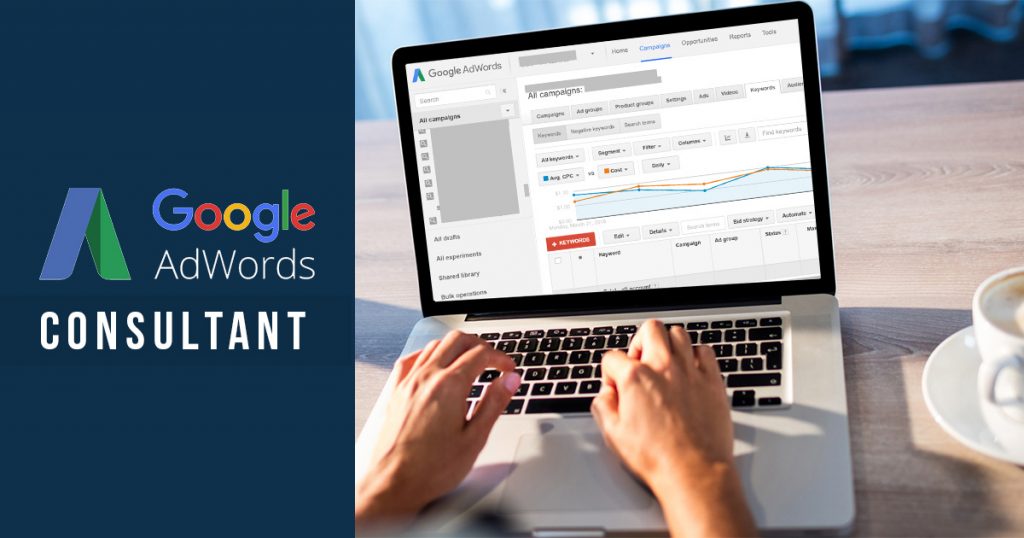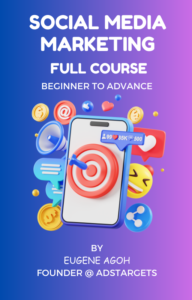Advertising on Google is an important way to showcase and promote your business online, This, however, involves understanding the pricing strategy and you must also pay particular attention to Google ads pricing.
In some sectors, in fact, SEO (i.e. the set of techniques implemented to improve the performance of an organic search website) is not sufficient to increase the visibility of a site on the most widely used search engine in the world, making it necessary to combine also a series of paid strategies and practices (SEA).
One of the most frequently asked questions when we talk about Google AdWords now Google ads is “how much does it cost to advertise on Google?
Many companies have already decided to invest in this advertising medium, but many other businesses still look at this channel with suspicion, and the main reason, often, is precisely related to the cost.
The most common and honest answer, in fact, is a bleak “depends”.
So how do you understand how much does Google AdWords cost? Or rather, how to understand how much is the right amount to invest in google advertising in order to get some good results?
Before defining how much it costs to advertise on Google, let’s analyze what it is, why it is useful and what opportunities Google Ads offers! 😊
Table of Contents
ToggleWhat Is Google AdWords?
Google AdWords, now renamed Google Ads, is the advertising platform owned by Google that allows you to publish ads throughout the network of Google and its partners.

Advertisements can be textual, multimedia through static images, animated banners, dynamic banners (whose content varies depending on the online activities of the device used), movies or videos and product ads (shopping).
The latter, in particular, are widely used by e-commerce as they consist of a product photo, name, price, shipping costs and an advertising message (optional).
Through Google AdWords, you can publish your advertisements both within the results page of a search carried out through Google (the first 3 or 4 positions at the top and the 3 positions at the bottom of the page), within all partner sites of the Google display network, such as eBay, within Youtube, as well as within sites and portals that host the Google search and all other Google platforms such as Google Maps or Gmail.
The publication of advertisements corresponds to one of the following activities carried out by a user on the Internet:
- use of the Google search engine;
- navigation on sites and portals that host advertising space managed by Google;
- use of Google’s Gmail or Maps platform;
- navigation on Youtube;
- use of mobile apps hosting advertising space managed by Google.
For each of these activities, Google AdWords offers one or more types of advertising campaigns that an advertiser can use, including:
- search campaign with text ads;
- display campaign with multimedia ads;
- video campaign with video ads;
- call only campaign (for mobile searches);
- shopping campaign;
- mobile campaign.
So, if the publication of the ads is linked to a user’s activity, it is easy to understand how effective this advertising medium is compared to more traditional ones.
Practical example:
Let’s assume that a user searches for “tennis shoes” through Google, they could see your advertisement, within the search results page, if your campaign involves the publication of text ads and you have included, in the list of keywords of the campaign, terms such as sneakers or tennis shoes or sports shoes, etc.
In this case, Google AdWords, by finding a match between the user’s activity (the search) and the configuration of your advertising campaign (type and keyword), will make your advertisement participate in the publication auction for paid positions within the search results page.
Google AdWords offers a number of additional options and configurations useful, for example, to limit or circumscribe the publication of ads based on time factors (days and time slots), geographical location (of the user’s device or the interest shown by the user in the search), demographic data (age, gender), interest and/or topics, or technology (a device used).
The quantity and quality of configurations available on Google AdWords is among the widest offered by online advertising media.
Is Google AdWords Useful?
There are many examples that you can do to analyze the usefulness of Google AdWords, but the main reason why it is recommended to use Google AdWords is that using it is almost always a winning strategy.

Let’s see some of them:
- If your company doesn’t sell products or services online, Google AdWords is useful to acquire possible customers with commercial offers that the user can access by sending their data or requesting a commercial contact (almost all telephone operators use these campaigns);
- If your company sells online, you must necessarily be present on Google AdWords! Google is the most used search engine, with 88% of the total online searches made in the world and 95% in Italy (source: gs.statcounter.com); so if a user wants to buy a product online, he almost certainly looks for it using Google and chooses the store where to make his purchases based on the results of his search;
- If your company offers services or products only locally, when a user makes a search for your business, it is essential that you are present in the search results with an advertising message, perhaps locating the target (public) to an area close to your location (proximity), the road to your store and a phone number to contact you immediately (all options of Google AdWords ads).
How Much Does It Cost To Advertise On Google AdWords?
There is no real “standard” price to make an investment in AdWords.
The daily budget is in the hands of the advertiser.
Hypothetically, it could be 1€ per day (although performance will not be very good).
Google’s system is more sophisticated than other traditional forms of advertising.
While in Television and newspapers is asked for a budget (usually quite expensive) for the publication of a video or a banner for a certain period, Google proposes we publish our ads at much more affordable prices and with only one limit to the publication: how much you are willing to spend daily, your budget.
As long as you have the credit you can publish!
There are, therefore, no time limits or price diversification according to time bands. The only limit is put in the hands of the advertiser.

How is the credit for a publication calculated?
Google has created a Pay per Click system. What does that mean? It means that we pay a certain price when a user clicks on our ad.
What if no one clicks?
In the (very difficult) scenario where no one clicks on the ads, we would not have accumulated any debt to the platform and therefore there would be no cost.
We can say that we would have shown our Brand to a number of people.
It goes without saying that these people did not register any interest in the Brand or the ad.
In this case, it would be better to review the targets we are hitting.
It’s a good idea to advertise for free, but if there are no returns, our actions lose their meaning.
And what happens to my daily budget if I have not accumulated costs?
Nothing. There were no costs and therefore there will be no charges.
There will be the indirect cost of the time taken to create a campaign that has brought no results.
That, however, is not counted by Google.
How much does a click on AdWords cost?
This is the most interesting and complex part of the platform.
The cost is determined by several factors that come into play, including the quality rating of our ad; the competition for the keyword we chose; the maximum cost we are willing to spend for a single click on our ad.
The cost is not, therefore, a fixed and predetermined element in our campaign but changes according to the factors we have just mentioned.
Let’s imagine that, for some unlikely reason, we found ourselves the only ones willing to publish for a certain keyword.
In such an idyllic situation, our cost per click would be very low and hypothetically 0.01€.
Now, let’s turn our utopian situation on its diametrically opposite side.
Everyone is starting to advertise our own keyword.
The first immediate effect we will see is an exponential increase in cost per click.
The second direct effect will be less publication and faster budget exhaustion.
What does the lower publication depend on?
As we said, publication depends on several factors.
Let’s remember that on the first page of Google we have limited positions available (which Google tends to vary over time to increase the returns coming from the platform. Fewer positions means more competition and higher costs for advertisers).
How does Google decide who to publish?
Everything starts with the user’s search.
When a person writes a search key, the platform checks which advertisers are competing to publish their ad.
As there are limited positions, and initial skimming is done, depending on the quality score given by Google to our ad.
Once this first choice has been made, it is necessary to understand in which positions the various advertisers will be published.
This calls into question all the various factors of publication that we have said above.
After analyzing the quality scores of the ads, the final position is decided thanks to an auction system in which, those who have more money per click received, will be published at the top of the list compared to other advertisers.
What is an auction system?
I’ll stop and reassure you right now. You don’t need to be online 24/7 to compete with every user search.
The system proposes us to define “upstream” as a maximum cost that we are willing to spend for one click.
The platform will do the auction.
The ads that have passed the first skim will be taken and then the publication criterion will be defined according to who can spend the most.
If we had 3 advertisers competing for the same keyword, but with different spending availability, whoever spends the most is published at the top of the other.
To be clearer:
John is offering 0.50€
Mary offers 0,51€
Mark offers 0,70€
The ads will be published in this order:
1st Mark | 2nd Mary | 3rd John
How much will advertisers pay for the ad?
Advertisers pay the minimum amount necessary to be published one position higher than the advertisement published one after their own.
This is the general rule that Google indicates and means that in our case John, Mary and Mark will pay one click, for this specific auction (remember that each auction is single and the process is done again):
Mark 0.52€
Mary 0,51€
John 0,52€
Careful. I said they’ll be willing to pay this amount for one click.
At the time of publication, they pay nothing. At the moment they have defined the publication criterion according to the availability of expenditure.
If you then click on an ad, then there will be an actual cost charged by Google for the amount defined in the auction.
Is there a standard cost for one click?
There is no standard cost for one click.
Google suggests an average indicative price for publication on the first page or first position depending on the keyword we are competing for but obviously, it changes from keyword to keyword.
If I had to give you a rough indication and to take “with pliers” I would tell you that we are around 1€ per click to be published in a good position on the first page, but take this as a single rough and totally generic indication.
If, on the other hand, you have less money available, you can always set a lower CPC offer (Cost per Click) and evaluate in which average position your ad is published and understand the return you have from this position.
If you want to increase your publication position, you can increase your maximum CPC offer at any time (or decrease it in the opposite case).
How Much Does A Google AdWords Consultancy Cost?
So far we have talked about advertising costs, which is the budget you are willing to invest in promoting your products or services on Google.
Of course, using Adwords Consulting also involves additional costs that vary depending on the complexity of the project, the hours dedicated to updates and optimizations, the experience of the consultant.
The Adwords quotation must be tailored, after a thorough analysis and careful listening to the client’s needs, in order to achieve the best result with the minimum budget, also depending on the investment possibilities.
The cost of the advice can vary from 100 to 500 euros for setting up an account.
A minimum of 200 euros for the supervision of the campaigns or, for expenses on the platform from 1000 euros per month and up, the expense can reach 15% of what is invested in Google.
Consultancy, depending on the situation, may include the design and implementation of landing pages that are often essential to convert traffic, or specific material, such as posts, videos or downloadable content for specific campaigns.
In summary, AdWords does not have a fixed cost and there is no price list.
The cost is variable and depends on various factors, which we could summarize with:
- Cost per Click: reference market;
- Cost of Campaign Setup/Creation: analysis, experience and creativity;
- Cost of Optimization/Maintenance and Reporting.
The first depends on Google, the market and the degree of competitiveness, the second and third on the consultant or agency to which you turn to and is usually a monthly management cost.

Conclusion
Finally, you want to answer one of the most frequently asked questions before venturing into the world of Google Ads:
“Can Google Ads increase revenue?”
advertising with Google AdWords, allows you to intercept users interested in what you offer and get them in touch with your business.
So advertising alone does not lead to an increase in turnover, but to an increase in visits from potential customers, when an entrepreneur manages to enter into this perspective, then everything becomes clearer for him and his marketing and commercial strategies will be successful.
Those who hope to grow their business by only advertising, I am sorry to say, but will have a “short life” to the advantage of their competitors.
To have an increase in turnover you need a well-designed marketing strategy, a commercial offer that can meet the needs of customers, planning over time activities and, above all, the help of experienced professionals.
Going it alone in the field of online advertising or digital marketing may not only fail to achieve the expected results but may even create additional costs, with negative consequences for the overall performance of your company.
If you liked this content let us know in the comments and don’t forget to follow AdsTargets! 🎯





One Response
If Google’s Ads customers only get an average ROI of 2:1, that means only around 10-20% probably make any profit at all after expenses. This my friends is what I all the 80:20 pareto principal at work!